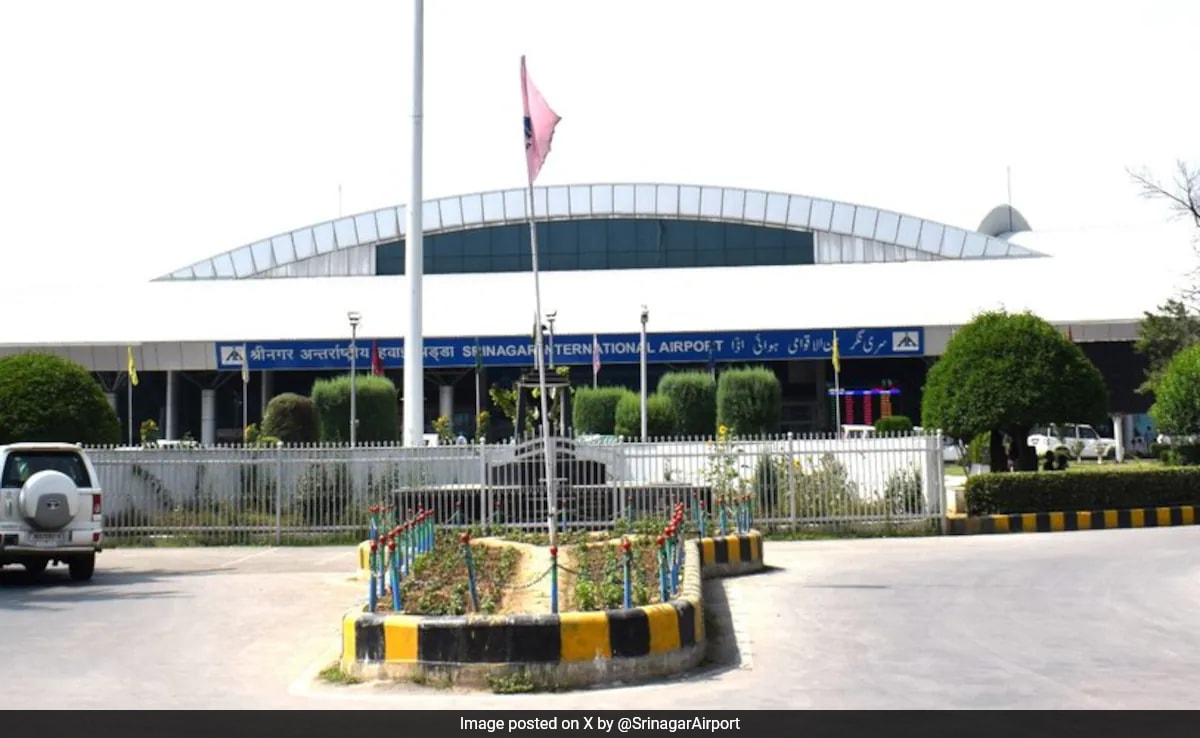Increased Air Connectivity Restored as Tensions Ease Between Neighbors
New Delhi: In a significant development, 32 airports across northern India have reopened for flight operations after being temporarily shut due to heightened tensions with Pakistan. This reopening comes on the heels of a ceasefire agreement reached between the two countries, which are both nuclear powers. The ceasefire, announced on Saturday, has provided a much-needed breathing space, allowing air traffic to resume in the affected areas.
The airports, including major hubs like Srinagar, Chandigarh, and Amritsar, were closed for several days due to airspace restrictions implemented following a series of military operations. As per the announcement from India’s aviation regulator, the Airports Authority of India (AAI), these airports are now accessible for civil aircraft operations and should return to normal activity immediately.
Travelers are advised to check with airlines for updated flight statuses, as many major carriers, including IndiGo and SpiceJet, confirmed the restoration of their services at these airports. The move marks a crucial step towards reinstating normalcy in air travel and reflects the broader de-escalation of tensions between the two nations.
Where and When: Airports Reopen Following Extended Conflict
The reopening of these airports spans across regions that have been heavily impacted by military actions and airspace restrictions. The initial closure had affected 24 airports, but this was quickly expanded to include a total of 32, encompassing airports in Jaisalmer, Jamnagar, Jodhpur, and other locations. The critical timeline began with the closure on April 30, following a massacre of 26 civilians in Jammu and Kashmir, attributed to Pakistan-sponsored terrorist groups.
Operation Sindoor, which involved Indian airstrikes targeting terror camps in Pakistan, prompted heightened military readiness and airspace restrictions. The situation escalated sharply when Pakistan retaliated, utilizing drones and missiles against Indian military installations and civilian populations. This prompted India to enforce stringent airspace restrictions to safeguard its air traffic during this tumultuous phase.
The tension peaked with videos of missile launches trending online, highlighting the urgency behind the closure of airspaces. However, the recent ceasefire announcement has set the stage for a restoration of air travel, giving hope to travelers and boosting the aviation sector once more.
The How: Coordination Among Airlines and Airport Authorities
The return to normal operations involves meticulous planning and coordination among various stakeholders, including airlines and the Airports Authority of India. The logistics of resuming services include reallocating slots, deploying staff, and managing crowds effectively. Both IndiGo and SpiceJet have expressed readiness to restore their flight schedules, ensuring that travelers can book flights without further delay.
The AAI has been proactive in disseminating information about the reopening. An official notification stated, “Attention Flyers; reference notice issued for temporary closure of 32 Airports for civil Aircraft operations till 05:29 hrs of 15 May 2025. It is informed that these Airports are now available for civil Aircraft operations with immediate effect.”
The aviation sector has long been a critical component of the regional economy, and the reopening of these airports is expected to provide a significant boost. With a restoration of services, the focus now shifts to ensuring passenger safety and comfort as operations ramp back up.
Wider Implications: What the Ceasefire Means for India-Pakistan Relations
The ceasefire agreement between India and Pakistan is a crucial turning point in the historical context of their strained relations. Previous skirmishes and conflicts have often led to prolonged periods of shutdowns, particularly impacting cross-border air traffic. The recent developments seem to signal a recognition by both sides of the need to stabilize the situation for mutual benefit.
The diplomatic channels have reopened as well, suggesting potential future discussions that could further de-escalate tensions. However, the specter of past conflicts looms over the relationship, with both nations remaining vigilant. As per the report by[The Times of India](https://timesofindia.indiatimes.com), officials from both sides are reportedly exploring options for joint initiatives to promote peace and security in the region, hinting at a broader attempt to improve bilateral ties.
Though the immediate threat may have subsided, the long-term implications of this ceasefire will depend on sustained diplomatic efforts and the commitment of both nations to engage in dialogue rather than conflict.
Moving Forward: What Lies Ahead for Affected Regions
With air travel once again an option for residents of northern India, the local economies dependent on tourism and trade are likely to experience rejuvenation. The restored connectivity is expected to aid in faster transportation of goods and services, making it beneficial for businesses and consumers alike.
Past instances of conflict have demonstrated that prolonged shutdowns of air travel can lead to significant economic losses. As both countries aim for a strategy of peace, the focus will likely become centered on enhancing regional cooperation and connectivity that benefits citizens on both sides.
In summary, the reopening of 32 airports marks a hopeful step towards normalization in air travel following a period of intense military conflict. The engagement of aviation authorities and airlines to resume operations illustrates the resilience of the sector, while the broader geopolitical context continues to evolve.
For further reading on the recent developments in the India-Pakistan conflict, check out[BBC News](https://www.bbc.com/news/world-asia-india-57002576) and[Al Jazeera](https://www.aljazeera.com/news/2021/4/30/india-pakistan-high-tensions-after-border-violence).
DISCLAIMER
We have taken every measure to ensure that the information in this article and on our social media platforms is accurate, verified, and obtained from reliable sources. For feedback or complaints, please contact us at info@hamslive.com.


